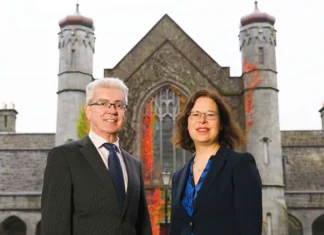Galway’s CÚRAM Research Centre for Medical Devices is helping primary school teachers trying to keep their students engaged while teaching online with a range of lesson plans for our nations’ budding mad scientists to try at home.
Primary school resources from CÚRAM’s Teachers in Residence programme have been adapted to help teachers deliver STEM education online in the current crisis.
These lesson plan kits have been developed by primary school teachers, in collaboration with CÚRAM researchers, and have been made with fifth and sixth class students in mind.
Five presentations, recorded by Teachers in Residence programme manager Dr Sarah Gundy, are now available, supplemented by downloadable lesson plans.
Dr Gundy, together with CÚRAM’s researchers are also offering primary school classes their very own ‘Ask a Scientist’ session in collaboration with their teachers either via email or as part of an online session.
Pre-recorded lesson plan presentations include:
- Healing the Heart: Learn basic heart anatomy, how a heart attack occurs and how to keep their hearts healthy. Follow up activities include construct a large diagram of the heart which can used to play “Heart Twister” at home!
- Mending the Musculoskeletal System: Learn about bones, muscles, and tendons, and how doctors currently treat damage to these tissues. Follow up activities show how to construct a model hand and act as a surgeon to fix a tendon using a Biomedical Engineering Kit from material you have at home.
- Fixing the Brain: Learn how nerves send and receive messages, and the causes of Parkinson’s disease. Students can build their own medical devices to treat Parkinson’s disease and test the devices by making jelly “brains” at home.
- Exploring Stem Cells: Learn about how stem cells are used by animals to heal their bodies. Students build model animals using cells made from playdough, and fix their injured animals by using playdough stem cells or building prosthetic devices.
- What are Biomaterials?: Learn about medical devices, and natural and synthetic sources of biomaterials. Students can make their own biomaterials at home (using slime!) to fix soft tissues.
Professor Abhay Pandit, Scientific Director of CÚRAM, said “We are very conscious of the difficulties faced by parents and teachers trying to continue to deliver quality content in a completely new format.
“We would like to offer these ready to use resources that deal with a very relevant and topical area of research to support the huge efforts being made by parents and teachers in a very challenging time.”
In addition to this, CÚRAM has also added ‘Bite-Sized Science’ activities to its website, offering quick, uncomplicated science activities for teachers or parents to share with children at home.
These activities are designed to be completed with the simplest of ingredients and materials, using everyday items found in most homes, and plenty of recyclables.
Should kids take an especially keen interest, links will be provided that allow them to delve a little deeper into the science behind the experiment.













